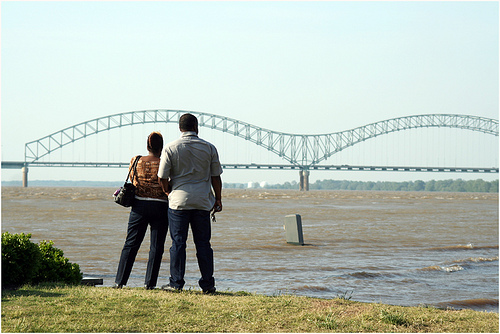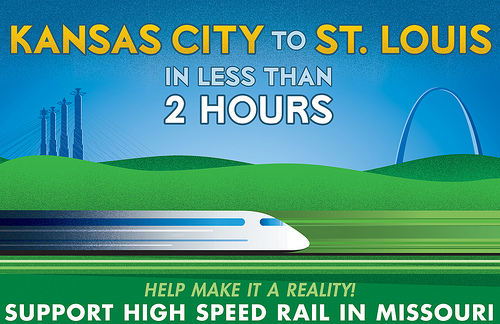 What if we recruited artists and designers to help sell the American public on the idea of high-speed rail?Illustration: Chris MurphyEarlier this week, the federal Department of Transportation announced $2 billion in new awards for 22 intercity rail projects that will improve the speed, aesthetics, and range of our existing rail system, while also studying the potential for high-speed rail in unexpected places like Texas. After a year in which Tea Party governors of Florida, Ohio, and Wisconsin refused federal assistance and canceled high-speed rail construction, this is a shot in the arm for rail advocates. But there is much more work to be done in convincing the public of high-speed rail’s importance, and advocates need to look beyond Washington for help in getting high-speed rail on track. Transportation and infrastructure advocates should partner with an unlikely but historically beneficial ally: the art and design community.
What if we recruited artists and designers to help sell the American public on the idea of high-speed rail?Illustration: Chris MurphyEarlier this week, the federal Department of Transportation announced $2 billion in new awards for 22 intercity rail projects that will improve the speed, aesthetics, and range of our existing rail system, while also studying the potential for high-speed rail in unexpected places like Texas. After a year in which Tea Party governors of Florida, Ohio, and Wisconsin refused federal assistance and canceled high-speed rail construction, this is a shot in the arm for rail advocates. But there is much more work to be done in convincing the public of high-speed rail’s importance, and advocates need to look beyond Washington for help in getting high-speed rail on track. Transportation and infrastructure advocates should partner with an unlikely but historically beneficial ally: the art and design community.
During the Depression, FDR’s administration smartly commissioned photographers to document the country’s poverty as well as government-funded infrastructure projects, such as the building of airports, bridges, and highways. While no comparable project exists today, the arts and design community still could play an integral role in explaining the impact of 21st-century infrastructure on American life. Los Angeles and Washington, D.C., for example, have invested heavily in revamping the image and purpose of their metropolitan transit systems; the rewards of integrating design and infrastructure are visible not only in their smart-looking buses and ad campaigns, but in their growing ridership levels and the demand for transit-oriented development.
The high-speed rail campaign has thus far failed to create a vision of what better rail could mean for American culture. The media and advertising industry have successfully portrayed cars and airplanes as the paragons of American technological and corporate prowess, and the symbols of freedom, sex, and democracy. By comparison, the high-speed rail coalition has failed to create any identity around passenger rail. Ad men and apps creators, urban planners and landscape architects are just some of the designers acutely aware of the country’s direction and equipped to recast high-speed rail as transportation best suited to handle our world of imperiled natural resources, of sharing rather than ownership, of professional mobility instead of nine-to-five jobs, and of communication rather than isolation.
The politically and economically oriented infrastructure debate also misses the big picture at stake: This isn’t just about rail, it’s a once-in-a-generation opportunity to rethink, shape, and shift American society. While the wonks harp on the projected passenger numbers and what kinds of subsidies are appropriate, designers could use their work to probe larger questions about how high-speed rail will transform the United States. Will it change the economy in post-industrial cities like St. Louis or curb sprawl in booming ones like Bakersfield? Could it revive old regional cultures in the Midwest, or create new ones between the Rockies and the Panhandle? Could it make our hectic lives more carefree? These visions of connectedness, of place-creation, of economic rebirth, are currently not part of the picture of high-speed rail. They’re not even part of the country’s larger discussion about its strategic direction.
A picture is worth a thousand words, and imaginative planning — from the details of a smartphone “ticket” to a new regional plan — would do a much better job of telling the story of high-speed rail while shifting the conversation away from political stalemates. The art and design community needs to step up and produce this work, but those calling for high-speed rail need to partner with those able to build a campaign that is robust — not with jargon and numbers, but with images and, most importantly, new ideas.
Our nation’s highways are nearing the end of their useful life, and airports are seeking expansions to cope with congestion; if we don’t recognize high-speed rail as a valuable third infrastructure option, we’ll be stuck with 20th-century solutions. Let our politicians and economists squabble, but high-speed rail advocates should enlist the talent and expertise of artists and designers to show us what winning the future looks like.



